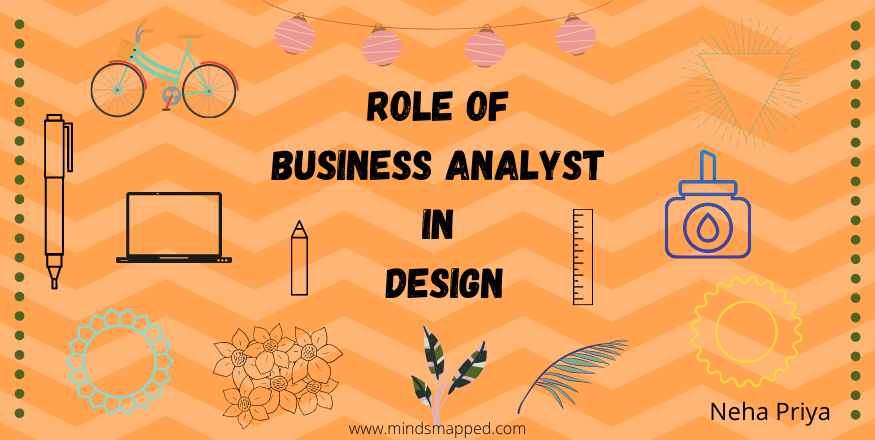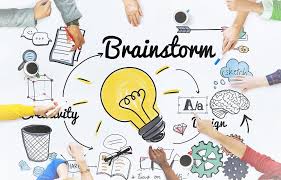
Role of a Business Analyst in Design
Roles and Responsibilities of a BA in Design Phase
With the changing times, many organizations are embarking on their digital transformation, intending to be reachable to customers by providing online services and information. The design principles are adopted to create a highly scalable, resilient, and performant capability that serves both current and future anticipated needs for the client. Integrated design tools enable the reduction of project design deliverables, a faster and more collaborative review process, and the reuse of design components.
Our role as a Business Analyst is to facilitate the design process with business stakeholders, designers, and developers. We need to ensure the design is well understood, delivers on prioritized requirements, and ultimately approved by the business.
The following are the three phases used in the progressive elaboration of Design where Business Analysts can contribute to shaping up the outcome.
Service Design
Service Design Framework provides clients with the tools to develop their future state service journeys. The first phase defines and implement’s the Service Framework, creating a consistent approach and methodology for service design across the organization. Documenting service playbook, which will be like a tool for the team to train, induct, and develop the service design capability and ensure consistency of practice across service innovation activities.
The second phase uses the Service Innovation Framework to redesign core services, creating future state services that are more reflective of what customers need and how they wish to interact with this service. This process enables the client to deliver on its organizational objective to be digital by design and customer-centric, and it supports its move towards its target operating model.
The Framework and Playbook provide a single source of truth for how service innovation should be done across, enabling the client to easily scale this way of working across the business. This process provides the team with the end-to-end future-state service blueprints for key services. These blueprints define the design principles to be considered as service redesign is rolled out to other services.
User Experience (UX)
The setting of goals and core customer journeys are discussed during the discovery phase of the project, where one can see maximum participation from both vendor and client team members. To identify goals that fulfill the needs identified in the customer journey and alignment with stakeholders on how the digital experience will fulfill this, an experience-driven framework is used.
The business analyst will usually work closely with the design team and in the earlier define stages of a project. They will help to capture and interpret the business requirements and have a say in defining and design solutions. Each round of the activity will focus on a single touchpoint in the journey. Teams will review the customer needs for that touchpoint, and understand the mindset of the core personas. This will help them identify the goals and tasks needed to fulfill each of the needs, using the goals template.
As part of this phase, clickable prototypes for digital services are designed for testing with customers, providing the team with feedback on the propositions. Clickable prototypes provide a tangible asset that implementation teams can interrogate and break down into requirements and stories. Working in a blended team develops the client’s internal capability through two-way knowledge transfer and co-design across the broader team.
Often a UX Business Analyst will take on the responsibility of many of the tasks of a functional Business Analyst, however, they will also have the opportunity to perform or assist in the following;
- Supporting, capturing and analyzing user research
- co-ordination of user testing
- Wireframe development
- Annotation of wireframes for specifications
As one can identify, it can be informative for Business Analysts to be involved in these sessions. It will also help in gaining a better insight into the business.
Visual Design
Visual Designers create a polished visual language focusing on the aesthetics and interactions of a website or other digital platforms. Visual designers take care fo the correct font size, color, alignment of text, hierarchy, and placement, etc. As Busines Analyst’s, we can challenge a designer’s decision if a particular feature aligns more with the client’s requirements.
As an example, some of the following rules can be set together by the designers and Business Analysts
- Character count needs to be applied or not
- Copy in a particular design is mandatory due to legal compliance
- User-behavior when they interact with an element on the page
- Other scenarios have been considered or not
- Different states of this component- e.g. first time user, returning user, logged in user, journey related content
- Are we meeting accessibility standards
- What we are designing compliant with the systems we are building on
Facilitating the Design Process
Business Analysts can help the designers in setting the foundation stone, but the deliverable outcome is developed by the creative designers. Business Analysts will elaborate on all the business rules applicable to a particular feature, and in some cases, will extend the understanding of technical feasibility as well.
Objectives
- Clarify & elaborate on designs before the build. Before the start of any development & throughout the project, revalidate designs & estimations
- Determining recommendations for future design.
- Agree on high-level scope & timeline with the business so that all the different phases, starting from service design, user experience, visual design, build and testing are mapped correctly on a roadmap and the latencies highlighted.
Inputs used by a BA in Design Phase
The business analyst has deep functional and application knowledge about how the system works and is intended to operate. In addition to this knowledge, the analyst may also have a business process or industry knowledge, enabling the individual to support and guide business analyst streams through the design, build, and test of a project.
Customer Journey – Each round of elaboration will focus on a single touchpoint in the journey and explain the context around it. Identify the personas the goal is relevant to. Business Analysts will review the customer needs for that touchpoint, and understand the mindset of the core personas. Identify if any additional goals are needed to fulfill the needs of each persona.
- Identify the pain points/opportunities
- Identify key internal and external sources for research
- Collate information & data with some guidance, with strong note-taking skills
- Actively participate in taking creative briefs from clients
Techniques used by a Business Analyst in Design Phase
Design Jams
Participate in conceptual ideation & design sessions. A design jam is a process that brings designers, business analysts, and stakeholders together to work toward a shared goal. All stakeholders are invited to participate in design jams to ensure their needs are reflected in the outcome. A challenge is given to focus the attention of the group, and feedback and inputs are greatly encouraged.
Contributing to the production of wireframes/prototype
Wireframing is a way to design a digital service at a structural level and provide a visual representation of requirements, user needs, user journeys, and interactions. Wireframes should be used as a deliverable and necessary input to development. Wireframes should always be added to the user stories by the business analysts. It helps to get a visual understanding of a digital product early. It establishes user and client approval on key features (such as navigation).
Business Validation Sessions
Aligning requirements to the business strategy or project objective. Conducting fit/gap/manual analysis. Defining business scenarios. Organizing mid-sprint checkpoints with the business stakeholders to ensure the direction of progress.
User testing
Customer feedback is such an important aspect of any design deliverable because user testing gives a reality check about how the designs are actually coming along. If this is understood and liked by the users, you have done good for yourself. Also participate in or QA functional testing (e.g. unsure testing has sufficient coverage or is accurate)
Personalization and Marketing Automation
This is the part where you work closely with content or analytics teams. They make sure the main focus of the project is held in the right realm of things and focusses on achieving the top priority objectives.
Technical Elaboration & Validation
When the solution is implemented, the business process analyst works with application specialists and developers to translate business requirements into capabilities that the solution can provide. The business process analyst also works with the business and end-users to identify how they can best utilize new tools or capabilities provided by the project. Technical Business Analysts will have a more detailed idea of the creation of technical specifications. As for the function of Business analysts, it is always good to have a feel of how to do administration work on the platform if needed, just gives you a little bit more depth to what you are doing.
Data Analysis
Understand if the source system/API data will support the intended designs. To many, this does not seem vital but as the project starts maturing and the real-time data starts getting pulled from the API responses, it might break or make the design looks ugly if the size of the content is not what was anticipated for. So this usually is a huge gap, and as Business Analysts our priority should be that our designs are capable of handling the size of the data that is expected. So, a next steps in this process is to define or design master data, and ensure that the design is catering to all the edgy scenarios.
Demonstrations / Showcases
As Business Analysts, we can assist the designers in generating creative briefs. Business Analysts can ensure the designs are aligned with the client expectations as they are closest to the business rules. Demonstrate these designs to the client. The presentation allows clients to pitch in and present their views. A part of the showcase, it is good to highlight what were the initial pain points and enhancements captured, and how the new design responds to those. This will give the team the context around the thought process that was taken into consideration to build the designs.
This is an opportunity where everybody can come on the same page with respect to the business requirements and agree that common understanding prevails across everyone on the team. Ensure appropriate stakeholder engagement and sign off for design outputs.
Business sign-off of designs
If the client approves the designs, then this could be a final sign off from them. The next steps will be it would be taken into the build phase for the development team. This will help in doing the Sprint forecasting for the development team and on the program level will give a good project roadmap which can emphasize the customer value being delivered at every milestone.
Outputs of Design Phase
Below are the few high-level design outputs that are expected to be delivered after the design development is done.
Designs & Prototypes
Assist in the gathering of feedback from users and stakeholders on design concepts. Familiarise Product owners with the low fidelity mock-ups of concepts. Gather relevant data for the production of personas and scenarios, identifying potential user segments. Screen designs, clickable prototypes and wireframes forms the most important part of the design deliverable.
Solution Architecture
Consults and seeks input from subject matter experts. Interacts constructively with all members to discuss an approach to developing a solution, and then works closely with them to produce a quality product.
Content Strategy
Participate in the development of information architecture, understanding the intersection of content, user and business needs
Deliverables that a Business Analyst will produce:
In the preceding section we highlighted what the design team will produce and how the business analysts can help in contributing in that process. Now we have specified what will be the Business Analyst deliverables based on design phase deliverables.
Features & scenarios
Once the vision and scope of the project are defined it is easier now to convert this into something that is quantifiable. User stories with elaborative acceptance criteria will take this in the build phase. This also helps in creating a healthy backlog. One the backlog is in place it is much easier to estimate and build timelines around delivery for each milestone.
Functional specifications
Contributing to the production of the functional specification. Build an understanding of functional specification content and structure, and how to select different elements for different clients and projects. Understand techniques to communicate with key stakeholders about the functional specification. Designs overall structure of functional specification, identifies required content, with sensitivity to client needs and expectations.
Process maps
It’s a flow diagram that describes how work is performed, showing each step in the process as an individual activity. Each activity is displayed in order, from beginning to end, alongside the role of the person who performs it.
- Training material/user guides
- Personalization/Engagement plans
- User journey/functional flows
User flows, which help designers focus on what users want to get out of interactions with a specific product or service. To ensure that the user experience takes priority over graphic design or information architecture structuring and provides a solid framework to move the project forward.
Design Tools
A few tools which comes handy when you are working with the design team:
- Meetings & Workshops – Zoom, Miro, Springboard, Mentimeter
- Wireframing & Prototyping – Sketch, Adobe XD, Figma, InVision, Axure RP, Flinto
- Design Collaboration – Abstract, Plant
- PowerPoint, Excel, Visio, Word, Axure
- Develops an understanding of W3C web accessibility guidelines – Wave tool
- Interaction Concept – Mindmaps
- Specifications – Confluence, Invision, Zeplin
Final Thoughts – Role of a BA in Design Phase
I have pore my heart out in telling how we as business analysts can be part of the beautiful phase called design phase. It is absolutely amazing to see the vision getting transformed in to the design and coming live with the perfect colour put to it.
I hope my view will resonate with yours and this article will enlighten you to on how you can be part of this amazing process.



